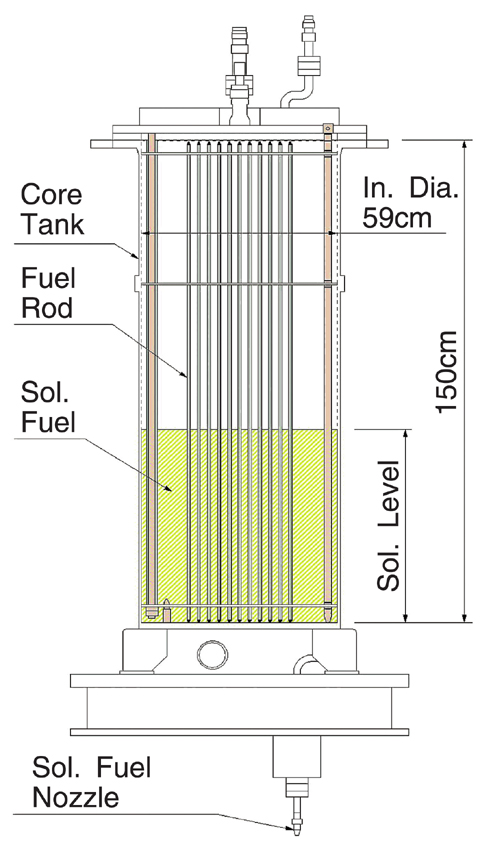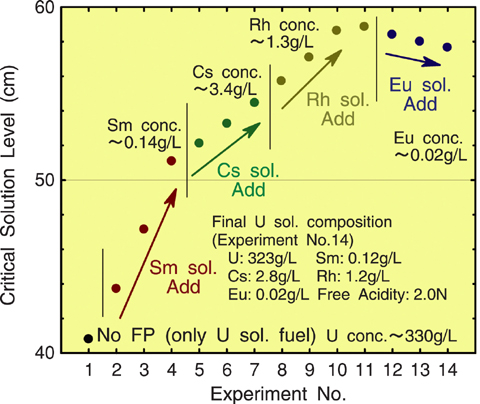
Fig.5-14 Heterogeneous system consisting of fuel rods and solution fuel

Fig.5-15 FP elements addition and critical level increase
In a nuclear reactor, nuclear burn of fuel proceeds with fission chain reaction, and thus fissile material such as uranium is depleted and fission products (FP) accumulate. Because both such changes hinder the chain reaction, spent fuel is by its nature harder to make critical than fresh fuel. The so-called "introduction of burn up credit" quantitatively evaluates this nature which enables handling of larger quantities of spent fuel in transportation, storage, reprocessing, etc. without danger of critical accidents
Up to now in Japan, there has been no example of burn up credit introduction considering of FP accumulation although there is one considering fissile material depletion. To quantitatively evaluate the FP accumulation effect, it is necessary to accurately estimate both the amount of FP in spent fuel and its negative effect on criticality.
Precise measurement of the negative effect of FP was conducted at the Static Critical Experiment Facility (STACY) in the Nuclear Science Research Center. Simulating the dissolving process of a reprocessing facility, where the advantage of burn up credit introduction is large, uranium solution fuel (235U 6wt%) was fed through a bottom nozzle to a core tank in which uranium fuel rods (235U 5wt%) were arrayed (Fig.5-14) and the critical level of the solution was measured. Natural elements of samarium (Sm), cesium (Cs), rhodium (Rh) and europium (Eu) were added in that order to the solution so that their final concentrations became equivalent to that produced by the power generation of 30 GWday per 1-t uranium. As a result, criticality was harder to reach, i.e., critical solution level was raised as shown in Fig.5-15.
Effect on criticality is expressed as change of neutron effective multiplication factor keff (keff is the change rate of the number of neutrons mediating chain reactions. keff is 1.0 at criticality). The effects of each element per unit concentration were estimated to be -3293 ± 40 ¢/(g/L) for Sm, -26.5 ± 1.4 ¢/(g/L) for Cs, etc. ("¢" is a unit of keff change; 7.6×10-5 for this experiment.)
Multi-group cross sections based on the nuclear data library JENDL-3.3 were produced by the SRAC code, and keffs were calculated by the TWODANT code. Computation analysis of the effect of each element based on the keff s agreed well with the measurement for Eu but gave slightly larger values than measurement for Sm, Cs, and Rh. Although the calculation was significantly larger than the measurement uncertainty only in the case of Sm, it should be noted that estimation by computation only may result in a larger negative effect than in reality.
Thanks to recent developments, the perturbation method now can be used with Monte-Carlo codes such as MCNP and MVP, so that the effect on criticality can be calculated, which should be validated with this measurement results. It is also necessary to improve accuracy of the post irradiation examination (PIE) to measure the amount of FP in actual spent fuel.
This report includes results of experimental and computational studies performed under a contract with the Ministry of Education, Culture, Science and Technology of Japan.